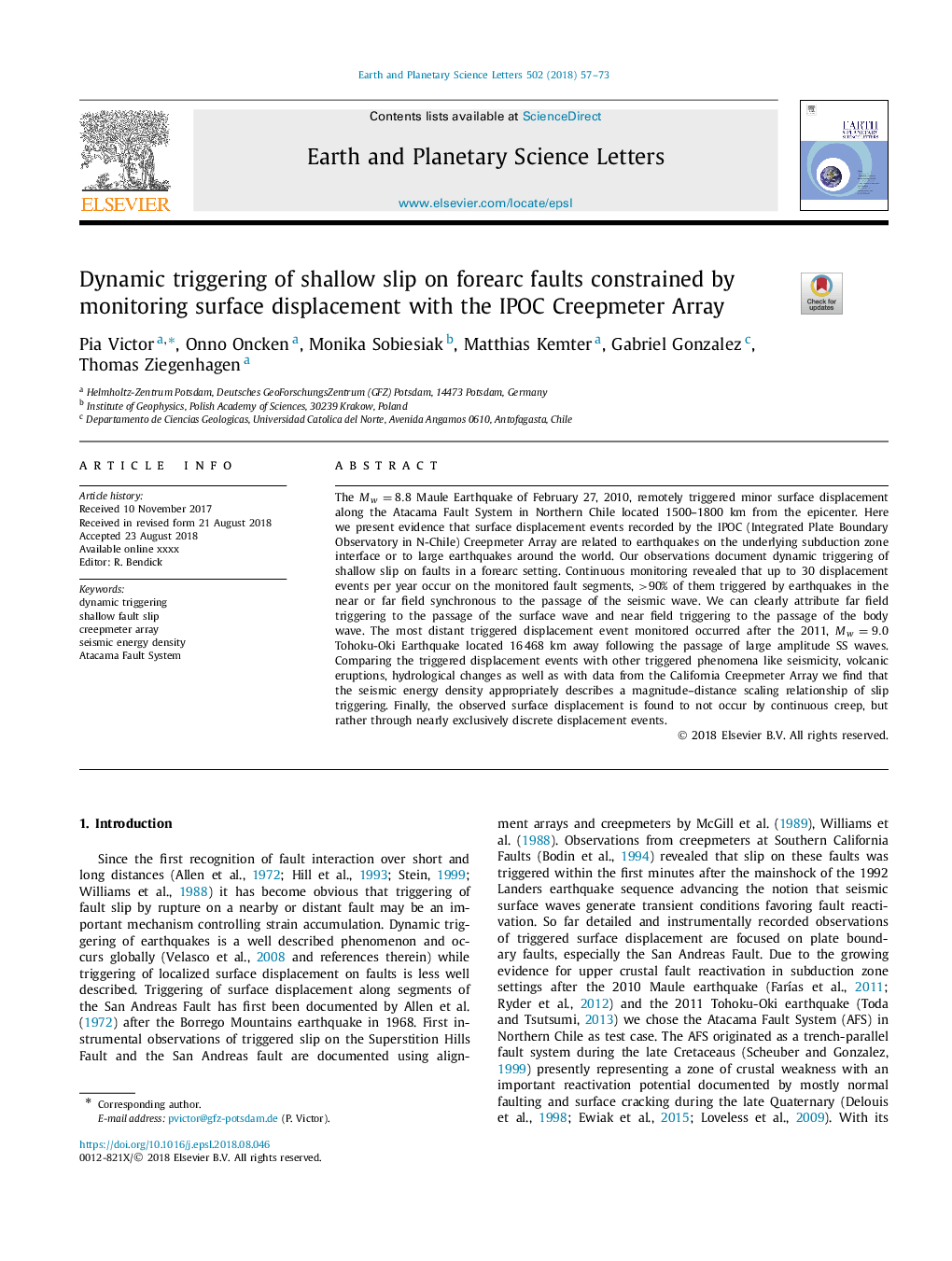| Article ID | Journal | Published Year | Pages | File Type |
|---|---|---|---|---|
| 9951463 | Earth and Planetary Science Letters | 2018 | 17 Pages |
Abstract
The Mw=8.8 Maule Earthquake of February 27, 2010, remotely triggered minor surface displacement along the Atacama Fault System in Northern Chile located 1500-1800 km from the epicenter. Here we present evidence that surface displacement events recorded by the IPOC (Integrated Plate Boundary Observatory in N-Chile) Creepmeter Array are related to earthquakes on the underlying subduction zone interface or to large earthquakes around the world. Our observations document dynamic triggering of shallow slip on faults in a forearc setting. Continuous monitoring revealed that up to 30 displacement events per year occur on the monitored fault segments, >90% of them triggered by earthquakes in the near or far field synchronous to the passage of the seismic wave. We can clearly attribute far field triggering to the passage of the surface wave and near field triggering to the passage of the body wave. The most distant triggered displacement event monitored occurred after the 2011, Mw=9.0 Tohoku-Oki Earthquake located 16â468 km away following the passage of large amplitude SS waves. Comparing the triggered displacement events with other triggered phenomena like seismicity, volcanic eruptions, hydrological changes as well as with data from the California Creepmeter Array we find that the seismic energy density appropriately describes a magnitude-distance scaling relationship of slip triggering. Finally, the observed surface displacement is found to not occur by continuous creep, but rather through nearly exclusively discrete displacement events.
Keywords
Related Topics
Physical Sciences and Engineering
Earth and Planetary Sciences
Earth and Planetary Sciences (General)
Authors
Pia Victor, Onno Oncken, Monika Sobiesiak, Matthias Kemter, Gabriel Gonzalez, Thomas Ziegenhagen,
